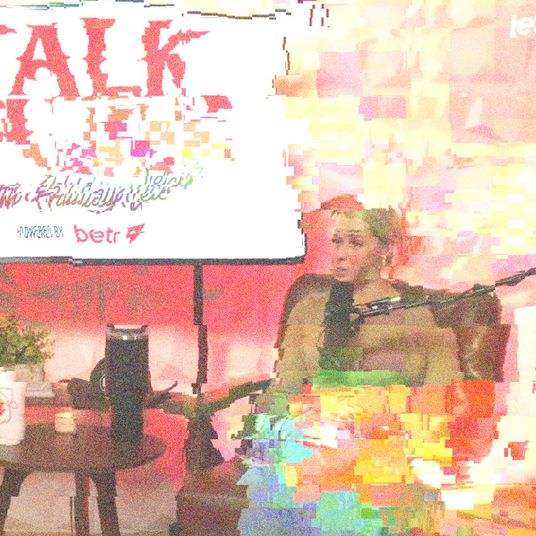While the dark days of journalism have receded a bit — it was only three years ago that layoffs were a weekly occurrence, and serious people discussed the closure of the New York Times — the business is still very much in a state of chaotic flux. The so-called war between new and old media rages on among the pundits, with Facebook supplanting Google News as the new bogeyman. But if you look past the hype, a bumper crop of new jobs and new ways of reporting have taken root, created by people who are willing to throw themselves into the breach and experiment. What follows is a list of 21 journalists and like-minded inventors who have created something exciting, interesting, and just plain cool. They’re crafting tools that fill the holes left open by the new/old media dichotomy. We call them innovators, but really they’re just finding the best ways to pursue their interests, while the rest of us get to benefit from their dedication — whether it’s news updates at the speed of light, precision-guided viral stories, or a return to “slow” reading.
THE TWITTER REPORTERS
Twitter’s value as a news source was proven during the Arab Spring, but sifting through the cacophony of the Twittersphere can be a Sisyphean task. Wouldn’t it be great if there were a guy whose every waking moment was devoted to doing that for us? For over 50,000 Twitter followers, it’s Carvin, who maintains an almost inhuman tweet frequency; on February 18 alone he tweeted 1,453 times — 839 original tweets and 614 retweets), mostly about events in the Middle East and North Africa. Carvin is a master aggregator, but he’s also a traditional reporter in many ways, having traveled in the region and built contacts there. “Retweeting is only a piece of what I’m doing,” he says. “I’m spending just as much time talking with people, on Twitter or through backchannels, as well as asking people to help me with my reporting.” It can be hard to know when to trust claims made by unfamiliar sources, so Carvin doesn’t take them at face value — he’ll ask for more information, using his legion of followers and contacts as a Twitter fact-checking squad — most notably when he recently helped expose the author of the much-lauded “A Gay Girl in Damascus” blog as a straight man in Edinburgh.
Brian Stelter
New York Times Media Writer
@brianstelter
New York Times media desk editor Bruce Headlam may have recently snarked that Stelter should try filing his expenses to Twitter, but that misses a crucial point: With his 67,000-plus followers and 30-plus average tweets per day, Stelter can drive a serious amount of traffic to the Times. Moving seamlessly between Twitter (where his real-time reporting from Joplin, Missouri, recently won praise from noted social media skeptic Bill Keller), the Times Media Decoder blog (where he files shorter, rapid-response news stories), and the print edition (where his longer, more analytical work regularly appears on the front page), Stelter has pioneered the art of multipurposed multi-platforming. “I find his productivity offensive,” says Times buddy and fellow Page One star David Carr. “I will be hanging over his cube chatting with him and then go back to my desk and find he was tweeting the whole time we spoke, and later that the tweets became a blog post that broke news, that the blog post became a Page One story.”
THE STORY SCIENTIST
Ky Harlin
Data Scientist, Buzzfeed
@kyharlin
Buzzfeed considers Internet hit-making just as much science as art. In the case of Ky Harlin, that’s not just a metaphor: He previously worked at a Boston medical-imaging start-up and says the two jobs aren’t all that different. Harlin analyzes traffic data from Buzzfeed and its partners, and feeds the data into a constantly updating regression model that gives him an idea of when a certain piece of content might go viral. While it might seem obvious that, say, cats are more viral than turtles, Harlin has the data to back it up. He says that stats show you can make even a dull story more sharable: “Stuff that can really speak specifically to someone is what does well. So if you take something on oil prices, that’s not viral. If you switch it to stories about gas prices increasing, those tend to do really well.” Harlin also helps guide the editorial team by using a natural-language-processing algorithm to generate a list of the most viral (as opposed to most searched) topics on the web at any given time. Those are the stories everyone will be talking about tomorrow — and Buzzfeed wants to have them today.
THE READERS’ REPORTER
Maureen O’Connor
Staff Writer, Gawker
@maureenoco
O’Connor has made her name with a modern wrinkle on an old-fashioned method: the reader-submitted tip, but in this case via Craigslist. Gawker has generated countless scoops by scanning Facebook pages and Internet message boards for revealing information, but O’Connor’s now-infamous exposé of “Craigslist Congressman” Chris Lee, the married family values politician she caught cruising for sex, was the biggest one of all. It quickly led to Lee’s resignation and foreshadowed the Anthony Weiner scandal. O’Connor now also spends a good part of her time explaining the Internet to an audience of relative noobs, as a weekly commentator on CNN’s Newsroom with Don Lemon, and a monthly guest of Hoda Kotb and Kathie Lee on Today.
THE VIRAL-VIDEO-MAKER
Steve Krakauer
Digital Producer, Piers Morgan Tonight
@SteveKrak
A truly mass audience for full-length TV shows on the Internet is still a long way off, but highlight snippets are already a huge viral phenomenon — so much so that creating them is now a full-time job. If you’ve watched a clip from Piers Morgan Tonight during lunch hour at your desk, it’s thanks to Krakauer, who scans through footage before and after it airs and picks out the sections with the most linkability. His biggest success so far? A video on Ricky Gervais after the comedian’s controversial Golden Globes gig. “He’s smart, he’s fast, he’s thorough,” said Mediaite’s Rachel Sklar, “and he’s got great pop-culture instincts — first person I heard about Jersey Shore from.”
THE LONG READERS
Marco Arment
Founder, Instapaper
@marcoarment
Though genius works of long-form journalism do exist on the Internet, distracted web surfers rarely have time to digest them fully, often opting for a blog summary or an even more succinct tweet. Enter Instapaper, a website and mobile app created by Marco Arment, who was also one of the lead developers of Tumblr. Instapaper’s bare-bones design reflects the simplicity of its purpose: While browsing the web, you can save interesting articles with a single click for when you actually have time to read them, even if “later” is on your subterranean, Internet-less commute home. Alex Pappademas, a staff writer at the Times Magazine, says that these days he’s “reading fewer magazines than ever” but “more magazine articles,” thanks to Instapaper.
Mark Armstrong
Founder, Longreads
@markarms
It’s not enough to bemoan your short attention span, or even to install read-it-later tools like Instapaper or Readability, if you can’t find the good stuff. To fill the gap, Mark Armstrong ditched a steady job at the personal finance site Bundle to create a curation service that started as a mere Twitter hashtag (#longreads) and morphed into the Internet’s best collection of reading material. Longreads has since added a dedicated website (just tell it how long you want to be occupied and it’ll recommend stories at appropriate length), a bevy of media partners, and the undying gratitude for anyone who has ever been stuck somewhere with time to kill.
Evan Ratiff
Co-Founder, the Atavist
@Ev_Rat
In his day job as a contributor to Wired, Ratliff has made a name for all-in features like his attempt to vanish off the civilized grid, but at the Atavist he’s trying to make sure that ultra-long-form journalism doesn’t do the same. There’s a reason there aren’t many 10,000-word articles out there, either in print or online: It’s prohibitively hard to publish them and make a profit. The Atavist, which bills itself as a “boutique publishing house,” sells the stories (“The Defender: Manute Bol’s journey from Sudan to the NBA and back again” was a recent addition) for digital devices like the iPad and Kindle for a few dollars, with the hope of also pulling in money from optioning movie rights and licensing the technology that runs the site.
THE LITERARY TEXTER
Lauren Leto
Author and Founder of Texts From Last Night
@laurenleto
Leto took a sorority e-mail chain documenting the wretched texts they received from men and turned it into a wildly popular website. Texts From Last Night evolved, as these things now do, into a best-selling book. Last fall, Leto debuted her second book, Judging a Book by Its Lover, which explores the vastly phony and funny ways we interact with books in modern society. (She’s already a CEO, yet she’s “always wanted to be an author,” she tells us.) But it’s her website — which has expanded into a multi-million-dollar operation with spinoffs like bnter and scored her a TV deal — that continues to make her a sought-after figure of advice and taste in the industry. After all, the person who knows that there’s money to be made in morning-after SMSs (the site’s biggest hit: “and then she said I drew a line on her forehead with my cum and whispered ‘Simba,’”) has to be some sort of genius.
THE DATA DETECTIVES
Aron Pilhofer
Co-founder, DocumentCloud
@pilhofer
Crowd-sourced journalism went mainstream in 2011, as the New York Times, Los Angeles Times, and the Guardian asked readers to help sift through the giant trove of Sarah Palin e-mails released by the Alaskan government in June. A longtime print journalist with “nerd tendencies,” Aron Pilhofer has a day job as editor of Interactive News at the Times, but also co-founded DocumentCloud along with some editors from ProPublica, which originally was designed to help journalists share, analyze, and collaborate on primary source material. Want to see the e-mails sent by Goldman’s Fabulous Fab? They’re on DocumentCloud. And thanks to a grant awarded last month, the service will soon offer the chance for readers to dig through the data as well.
Matt Stiles
Data Journalist, NPR
@stiles
Everything in Texas is famously big, and that includes the databases that Stiles helped to create at the nonprofit Texas Tribune: info on 160,000 state prison inmates, the salaries of 550,000 public employees, the 6,000 bills introduced in the state legislature, and even the Zip codes and per capita incomes of Texas lottery ticket buyers are all available for number crunching by reporters and concerned citizens alike. Since May, Stiles has been a data journalist at NPR’s StateImpact project, which sends a team of reporters to go deep on a pressing public policy issue.
Amanda Michel
Engagement Editor, ProPublica
@amichel
Michel, who previously ran HuffPo’s OffTheBus citizen journalist project, is rethinking crowd-sourcing when it comes to journalism. That means using the masses to help comb through the federal government’s Recovery.org site, or even hiring the hive mind at Amazon’s Mechanical Turk to help crunch the data. Her latest project at ProPublica is #MuckReads, inspired by Longreads (see above), where anyone can nominate an investigative journalism story by tweeting the hashtag and having the story appear on ProPublica. “Your participation is key to making #MuckReads a success,” she said. “Be ruthlessly discriminating.”
THE MEME GENERATOR
Christopher Poole
Founder, Canvas and 4chan
@moot69 @moot
Chris Poole (handle: “moot”) founded the anonymous message board 4Chan when he was just 15. It’s grown into the breeding ground for some of the web’s most pervasive memes, as well as some of its more ominous movements. In the last two years, Poole has raised more than $3 million in venture funding for a new image-centric site called Canvas, which is similar to but separate from 4chan, and he’s become an advocate for web privacy. At this year’s South by Southwest conference, for instance, he had this to say: “Zuckerberg’s totally wrong on anonymity being total cowardice. Anonymity is authenticity.”
THE AD INNOVATOR
David Cho
Ex-Publisher, The Awl; Director, Business Development, Grantland
@DavidCho
The Awl, which launched with Cho as publisher alongside writers Choire Sicha and Alex Balk , was run on a shoestring and didn’t have investors or much of an ad model at the start. Cho figured out how to create advertorials — or, to use a slightly more nuanced term, “sponsored posts” — that don’t suck. It helps when you have star writers like Sicha and Edith Zimmerman to pair with marketers like American Express and Ann Taylor. The result is on-message content that is actually a pleasure to read, as evidenced in brilliant posts like Cho’s paean to his skillet (brought to you by Hyundai!). “The fact that we were able to build a real business out of nothing is what I’m most proud of,” says Cho. Grantland, which has expressed the common but as yet unrealized desire to break away from the traffic-driven Internet ad model, will need all his skills.
THE SOCIAL MEDIA EDITORS
Rob Fishman
Former Social Media Editor, Huffington Post
@rbfishman
Before leaving recently to launch a new, as-yet-unannounced venture, Rob Fishman spent all day on Twitter and Facebook, training the Huffington Post’s editors to maximize exposure to their stories and working with his tech team to build new products. Every HuffPo page has social media embedded all over it — the Most Popular widget, featured tweets, notifications on what your friends are reading, and story recommendations based on Facebook data. Not to mention the 4 million comments a month that Huffpo gets — all of which beef up page content, provide more links to share, and keep people coming back to stay in the conversation. Commenting, as Fishman observes, “was social before there was social.” Search engine optimization (the art of getting stories to rank high on Google and other sites), has been blamed for draining creativity from headlines, but Fishman says he tried to encourage editors to have fun. “When writing a headline, think to yourself: ‘What would I search?’” he advises. “’Headless Man In Topless Bar’ is funny, but readers won’t find it.” The same goes for Twitter: “Tweets with an authentic voice or savvy sensibility perform far better. Tweets should be smart and pithy.”
Anthony de Rosa
Social Media Manager, Reuters
@antderosa
De Rosa’s career track sounds like a paraphrase of Hunter Thompson’s words: When the media world gets social, the social media guys go pro. He started by running a few sites catering to Giants and Mets fans, and co-founded Neighborhoodr, a network of local news blogs. While he eventually landed a non-editorial job on the business side of Reuters, in his spare time he was becoming the biggest name on Tumblr with his blog SoupSoup. Its hook was to use Tumblr’s reblogging functionality to create a polished, full-fledged blog based on nothing more than de Rosa’s winningly idiosyncratic taste in news, photos, and video. It didn’t take Reuters all that long to figure out there was some serious unused editorial talent in the building: They hired de Rosa as the company’s social media manager earlier this month. He’s now hard at work plugging the reporting juggernaut into what’s loosely called the “ambient wire,” that is the news-spreading apparatus made up of social networks. De Rosa not only alerts Twitter and Tumblr to what Reuters is doing; he also alerts Reuters’ editors to what Twitter and Tumblr are doing.
THE SLIDESHOW ARCHITECT
Heather Murphy
Slate
@heathertal
Heather Murphy’s title at Slate is “photo editor,” but in practice, she’s the slideshow ninja. Slideshows are rampant across the web, of course — but Murphy is tasked not only with production but also with conceiving clever galleries like “Rupert Murdoch is not impressed.” “That melding is what’s different,” she explains. “You need people who can both write and understand the visuals.” Murphy is unapologetic about the oft-derided form: “It’s an appealing way to digest news and information.” But she’s also careful to point out that the point of putting an editor in the role is to make sure the slideshows be valuable to the reader, without generating that all-too-common feeling that you’ve been tricked into clicking something mindless for the sake of page views.
THE META-CRITIC
David Shapiro
Creators, Pitchfork Review Reviews
If the Internet has reinvented the art of commentary via linking and reblogging, then writers like Shapiro have made it into conceptual art. Shapiro is living the dream of every 22-year-old in a soulless office job with a gimmicky Tumblr: First he created the ultrameta Pitchfork Review Reviews, which criticizes the critics at the influential indie music site. Then he began branching out with run-on-filled meditations and party reports in a style that might be described as L Train Modern. One of those stories drew the attention of a production company, which optioned a script. Meanwhile, Shapiro has also started to do some writing for more mainstream media outlets, like the Village Voice. He says he hopes to follow in the footsteps of a hero, mixtape-leaker Lil’ Wayne, one day “achieving the dream of everyone who writes for free on the Internet: eventually getting paid.”
THE VOICE OF THE COMMENTARIAT
Katie Baker
Staff Writer, Grantland
@katiebakes
Baker’s career path has been paved with online anonymity. As a teenager, she became a popular personality on the now antiquated IRC and Usenet message boards, where she wrote primarily about sports and youth. “In 1996, I spent so much time chatting at this site called called TalkCity that they hired me to moderate and host topical chat room content,” she recalls. (She was 16.) Later, reading Gawker, Baker applied the same strategy, with equal success, becoming one of the first contributors to be plucked from the comments section. “If you hang around anywhere long enough they’ll eventually give you a job,” she jokes. For a while, Baker created — and perfected — a livelihood critiquing the New York Times “Vows” column under her commenter pseudonym “Phyllis Nefler.” Oh, and she managed to do all this while working at Goldman Sachs’ private wealth management division, although the bank didn’t sound too pleased about the arrangement — it asked her to leave immediately when she gave her two weeks’ notice to start at Grantland, ESPN’s hip new sports and entertainment magazine.
THE STYLE CURATOR
Stephanie LaCava
Editorial Director, Nomenus Quarterly
@stephanielacava
One case for print’s long-term survival is that magazines will increasingly become high-end, lavishly produced collector’s items. If that’s the case, they’ll still probably benefit from web-savvy editors like LaCava. Before she started working at Nomenus Quarterly, a limited-edition magazine of original or previously unpublished images that usually costs around $2,500 per issue, she grabbed attention by writing for free on her eponymous Tumblr, catching the eye of editors at Condé Nast’s Vogue, and parleying her exposure into a book deal. LaCava’s Internet presence has helped Nomenus Quarterly get wider attention — which is saying something, given the price. “She really helped me expand its audience, since she is so great with networking,” says editor Erik Heck. “She’s always getting people to connect in an honest, down-to-earth way.”
THE VIDEO GAME-CHANGER
Zach Klein
Entrepreneur, Venture Capitalist
@zachklein
The Internet is full of one-hit wonders, but Zach Klein is not among them. After selling a majority stake in College Humor, which he helped to grow into an online bro-comedy empire, to IAC in 2007, Klein quickly moved onto his Next Big Thing: Vimeo, the popular community-oriented video-sharing website that now has 44 million users. That done, Klein helped build Boxee, the watch-the-Internet-on-your-TV device. Whatever the next innovation with Internet video turns out to be, he’ll probably have a hand in it.




























